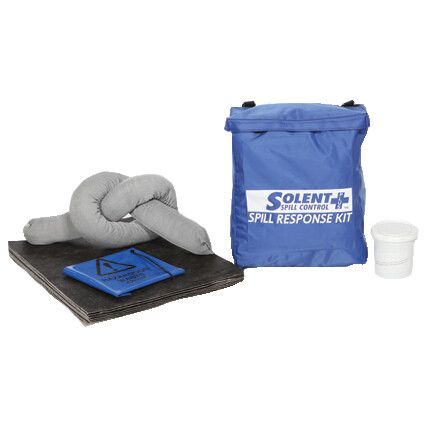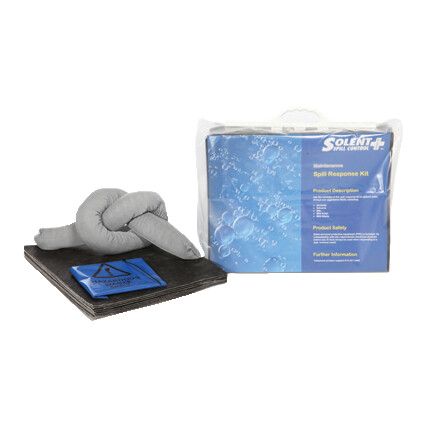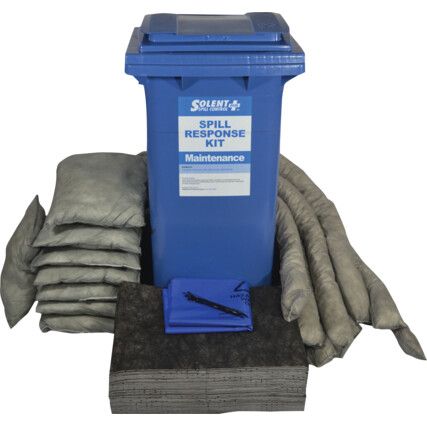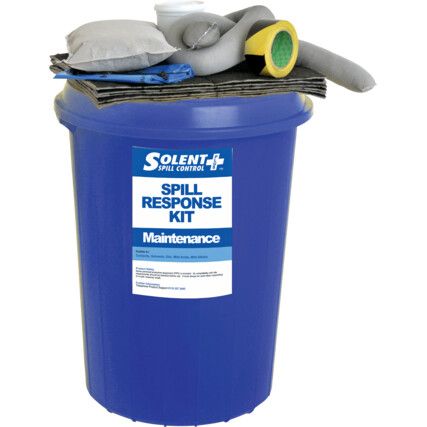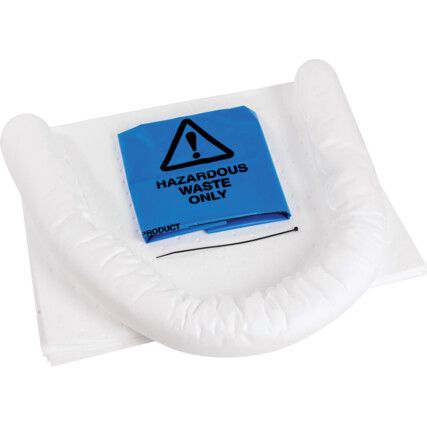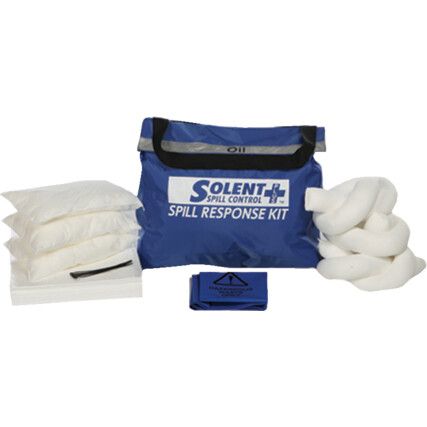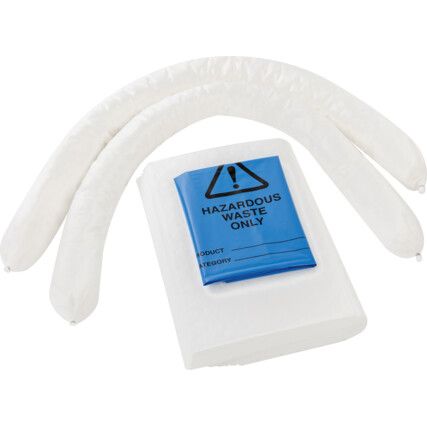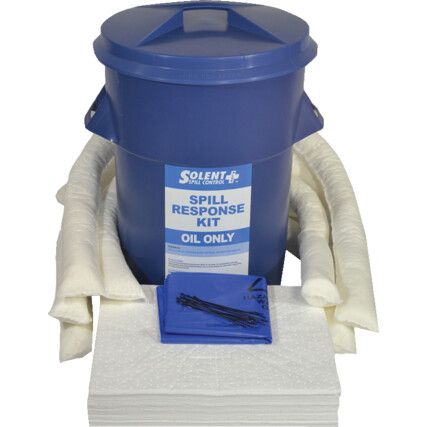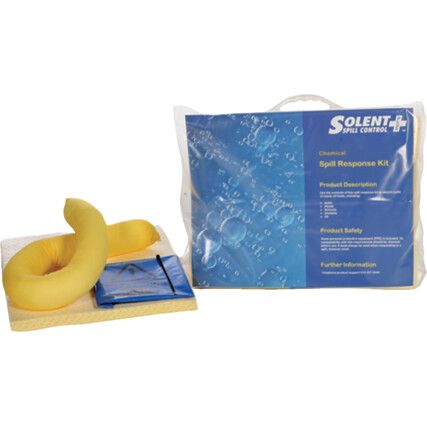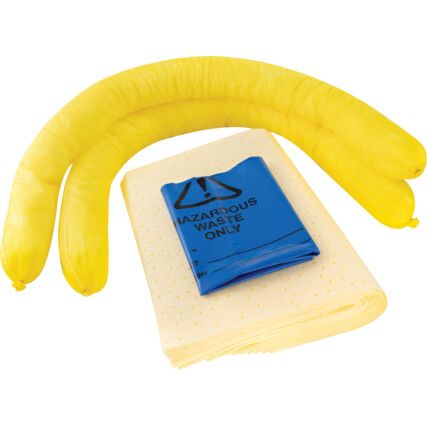Spill Kits
Shop for spill kits of all types and sizes online now at Cromwell. We stock a comprehensive selection of spill kits and absorbent refills to keep you prepared. Choose from market-leading brands, including Ecospill®, 3M™, Rubbermaid®, Fentex® and our own brand, Solent Spill Control®. For further information on Spill Control products, find more in our Spill Control Expert Guide.
What are spill kits?
Spill kits are a collection of highly absorbent products designed for the control and absorption of hazardous liquids. They are available in a range of sizes and typically consist of a storage unit, a number of absorbents and a disposal container, like a hazardous waste bag.
Why buy spill kits?
When working with vehicles or regularly decanting chemicals and oils, a spill kit is essential. Designed for an immediate response, these kits help to prevent slip hazards and protect the waterways against pollution should there be a large spill.
When are spill kits used?
In the event of a spillage of hazardous liquids, such as chemicals and oils, spill kits can be immediately deployed to contain the spill and start to absorb it for easy clean-up with minimum risk. Spill kits are used in the industrial and healthcare sectors and by emergency services. You may see them on petrol station forecourts and even in marine locations in case of an oil spill into the ocean.
Spill kit types
There are three general types of spill kits: chemical-only spill kits, oil-only spill kits and general-purpose spill kits to cover everything else. They all contain, depending on their size, a series of absorbents designed for optimum absorption and control of hazardous spills. These are sold separately as refills, and are what we will focus on here...
• Absorbent booms - These larger absorbents are suitable for use on both land and water and are used to surround and contain a spill to prevent it from spreading or running downhill into waterways. They are designed with high tensile strength and can often be linked together to tackle larger spillages.
• Absorbent granules - There are different varieties of granules for indoor use and outdoor use and they're a quick and lightweight solution to smaller spillages. General-purpose types tend to be made from sawdust, while clay is used for outdoor granules. Indoor granules are usually made from recycled absorbent materials that won't stain floors and walls.
• Absorbent pads - There are three types of pads: chemical only, oil only and maintenance pads. They're layered onto a spillage to absorb and hold the liquid in an absorbent core, so when they're collected for disposal, no liquid will seep out.
• Absorbent pillows - Available for all classifications of spill, absorbent pillows are securely stitched around the edges and contain a large amount of highly absorbent material. They're ideal for use when a spill has pooled in a hard-to-reach area as they are malleable enough to push between machinery and bars.
• Absorbent rolls - This type of absorbent is identical to absorbent pads, except that it comes on a roll for dispensing the exact amount required.
• Absorbent sheets - Lightweight and ideal for smaller spillages, oil-only absorbent sheets are often used to absorb spillages in rivers and oceans, as their hydrophobic characteristics repel water, but absorb oils.
• Absorbent socks - Similar in appearance to absorbent booms, socks are smaller and often used to surround leaking machinery.
Considerations when choosing spill kits
• Liquid types - depending on the types of hazardous liquids you handle on a regular basis, a spill kit for each type should be purchased.
• Liquid volume - to ensure you have the right size of spill kit, consider the volume of liquid should the entire contents spill, and choose a size based on the worst case.
• Storage - ensure you have an easy access location that's visible to store your spill kits.
• Safety - any employees using a spill kit need the correct PLE and training on how to deploy the different absorbents and clean up afterwards.
Spill kit jargon buster
It's important that you follow the legal guidelines for disposing of hazardous waste. To support you with this, we've given some handy information below...
What are the absorbed liquid destruction regulations?
Every new spill kit is supplied with a disposal bag and ties to ensure secure closure. The bag will be marked as hazardous waste and should be disposed of in line with local council hazardous waste regulations. Check online at https://www.gov.uk/find-local-council to find your local council and find out more about your environmental duty of care at https://www.gov.uk/dispose-hazardous-waste.
FAQs
What should a spill kit contain?
Most spill kits will be supplied in a storage container, including a holdall bag or a bin depending on the size. There will be a number of absorbent products that will cover the spill amount in litres and a labelled disposal bag and ties in which to place used absorbents.
Depending on the size and type of the spill kit, PPE should be included, ranging from protective gloves to goggles and a coverall (these must also be disposed of after use).
What should I do if a spill occurs in my facility?
• First things first: protect yourself by donning the correct PPE equipment.
• Locate the source of the spill and stop it (you may need to add absorbent socks or pillows underneath and around the source, depending on how the spill occurred).
• Next bring the correct spill kit to the location, and, if it's large and spreading, contain it with absorbent booms.
• Add some signage to the area to keep employees away from the hazard.
• Add the next absorbents to the spill to soak it up. You may need to repeat this step with fresh absorbents to ensure the entire spill is cleaned.
• Load the used absorbents into the disposal bag and secure it with the ties provided.
• Check the area to make sure all the spillage has been cleaned up.
• Log the incident in accordance with your company's policies.

